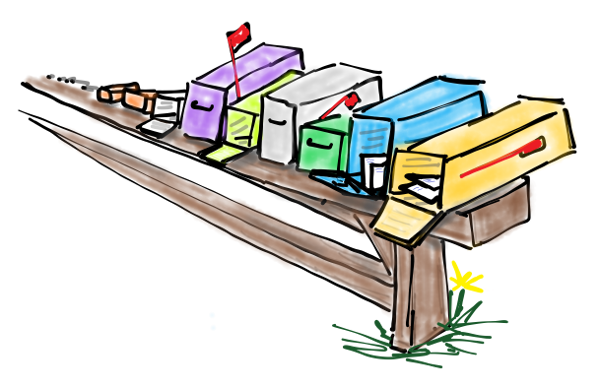Sending
There is a long-standing tradition in programming that your first program should say "Hello World". Here's the simplest rholang code to put that text on the screen.
Say Hello

new stdout(`rho:io:stdout`) in {
stdout!("Hello World!")
}Exercise
Make the program print "Rholang rocks!" instead of "Hello World".
WTH is stdout?

The heart of rholang is communicating on channels. Channels are communication lines that you use to send and receive messages. To send a message on a channel, you use the ! character.

We created the channel stdout on the first line of the program with new stdout. You'll create lots of channels as you learn rholang. We also gave our channel a special power by including (rho:io:stdout). More on that later, but for now just know that you need that part in parentheses to make text actually appear on the screen.
Using other channels

You can actually send messages on lots of channels, not just stdout. But unlike stdout they won't display on the screen because we won't add any special powers to them.
new randoChannel in {
randoChannel!("This won't be on the screen")
}So where do the other channels go then? Nowhere! Not yet anyway. The messages just sit there waiting for someone (or some process) to receive them. We'll learn how to receive messages in the next lesson. The place where messages sit in the meantime is called the "tuplespace".
Make sure your message is sitting in the tuplespace. You should see some text like this depending on which developer environment you use.
Storage Contents:
@{"RandoChannel"}!("This won't be on the screen") | for( x0, x1 <= @{Unforgeable(0x01)} ) { Nil } | for( x0, x1, x2, x3 <= @{"secp256k1Verify"} ) { Nil } | for( x0, x1 <= @{"sha256Hash"} ) { Nil } | for( x0, x1 <= @{Unforgeable(0x03)} ) { Nil } | for( x0, x1, x2, x3 <= @{"ed25519Verify"} ) { Nil } | for( x0, x1 <= @{"blake2b256Hash"} ) { Nil } | for( x0 <= @{Unforgeable(0x02)} ) { Nil } | for( x0 <= @{Unforgeable(0x00)} ) { Nil } | for( x0, x1 <= @{"keccak256Hash"} ) { Nil }Doing two things at once

In rholang we don't tell the computer to do one thing, then another, then a third. Rather we tell it all the things to do, and it does them "concurrently," or all at once.
new chan1, stdout(`rho:io:stdout`) in {
stdout!("I'm on the screen")
|
chan1!("I'm in the tuplespace")
}The | is pronounced "parallel", or "par" for short.
Exercise
Send the message "1 large pepperoni please" on a channel called "pizza shop".
Exercise
Send "Hi Mom" on the channel "Mom's Phone".
Exercise
Print two messages, "Rick" and "Morty", on the screen in one program.
Quiz
What will stdout!("Programming!") print to the screen?
- Programming!
- stdout!
- Nothing
What channel does what!("Up") send a message on?
Upwhatwhatstdout
Which does rholang do first in
stdout!("Dogs")
|
stdout!("Cats")- prints "Dogs"
- prints "Cats"
- Neither. They are concurrent
Exercise
There is also a special channel called rho:io:stderr. Check out what happens when you send to it. (what's the difference?)